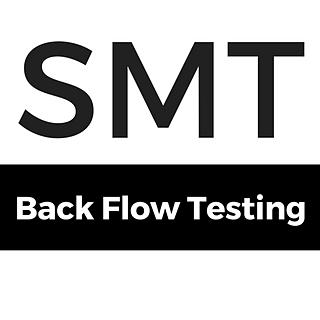5 Signs Your Backflow Preventer Isn't Working
- Steve Tamkee
- Aug 9
- 2 min read

Backflow prevention systems are the unsung heroes of clean water. When they fail, the risks ripple far beyond a single pipe—potentially contaminating entire systems. If you manage a commercial building, multi-family residence, irrigation setup, or fire sprinkler system, recognizing the signs of backflow failure could protect your water supply, your property, and your reputation.
What Does a Working Backflow Preventer Look Like?
A properly functioning backflow preventer is sealed, pressurized, and equipped with valves that only allow water to flow in one direction…away from the clean water supply. You’ll find it securely installed in a protective enclosure (usually above ground), free of rust, leaks, or cracks. It should pass routine cross-connection control inspections with flying colors and respond appropriately during pressure or flow tests.
Why Backflow Prevention Is Necessary in Commercial, Irrigation, Fire Sprinkler, and Multi-Home Residential Spaces
From high-rise buildings to landscape irrigation systems, backflow prevention protects public health by keeping contaminated or non-potable water from reversing into the main supply. Whether it's pesticides from an irrigation system or stagnant water in fire sprinklers, the risk of back-siphonage or backpressure can compromise drinking water through cross-connections. A single failure can impact hundreds of residents or disrupt business operations. This makes prevention non-negotiable.
What Are the 5 Signs Your Backflow Preventer Isn’t Working?
Backflow issues aren't always dramatic, but they are urgent. Look out for these five red flags:
Visible Leaks or Cracks: Water pooling around the valve housing could indicate damage to the internal seals, gaskets, or body.
Fluctuating Water Pressure: Unexpected drops in pressure may point to a malfunction in the check valves or relief mechanisms.
Discolored or Foul-Smelling Water: Signs of cross-connection contamination, such as rust-colored or sulfur-smelling water, are red alerts.
Noisy or Vibrating Pipes: Whistling, hammering, or vibration from the backflow assembly can mean valves aren’t closing properly.
Failed Testing or Inspection: Annual inspections may reveal internal valve wear or pressure loss. This, of course, is a less common sign of a failing unit.
What to Do When Your Backflow Preventer Fails
Don’t ignore the warning signs. If your backflow preventer shows any of the symptoms above:
Shut down the affected system (e.g., sprinkler, irrigation) to prevent further contamination.
Call a certified backflow technician immediately to test, repair, or replace the unit.
Document the issue for compliance purposes, especially in commercial and multi-residential buildings.
Schedule regular cross-connection control inspections and valve testing to prevent future failures.
Backflow prevention isn't Just About Your Building
Backflow prevention isn’t just a plumbing feature. It’s a matter of public health. Whether you're managing a fire sprinkler system, an irrigation setup, or a multi-unit complex, early detection of backflow failure can prevent costly damage and health hazards. Don’t wait for water quality complaints or system failure. Stay vigilant, test annually, and act quickly when something seems off.




Comments